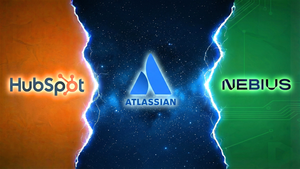
As of late October 2025, the "AI narrative" remains the most potent force shaping financial markets, driving an unprecedented surge in technology stocks and recalibrating investment strategies across the globe. This enduring enthusiasm is fueled by a confluence of rapid technological advancements, tangible monetization opportunities, and massive capital expenditures by industry giants. The S&P 500 has repeatedly hit record highs this year, largely propelled by the "AI Gold Rush," with AI-related stocks now comprising an estimated 44% of its market capitalization, a significant leap from just 26% in late 2022.
This relentless momentum has not only elevated the valuations of established tech behemoths but has also sparked intense debates about market concentration and the potential for overvaluation. Companies providing foundational AI infrastructure, particularly semiconductor manufacturers, are experiencing historic demand, while broader enterprise adoption of AI is accelerating, demonstrating clear returns on investment. The ongoing narrative underscores a pivotal shift in the market, where AI proficiency and integration are increasingly becoming the primary determinants of a company's perceived value and future growth prospects.
The Unfolding AI Revolution: A Detailed Timeline and Key Players
The period leading up to October 30, 2025, has been marked by an extraordinary acceleration in AI development and its commercial integration, fundamentally altering tech stock performance. Between late 2022 and October 2024, the inference cost for advanced AI models plummeted by over 280-fold, alongside annual hardware cost reductions of 30% and energy efficiency improvements of 40%. This made AI more accessible, paving the way for a surge in business usage, with 78% of organizations reporting AI adoption in 2024, up from 55% in 2023. Governments globally, including the U.S., Canada, China, France, India, and Saudi Arabia, have also committed substantial investments and introduced numerous AI-related regulations, signaling AI's strategic importance.
The market has responded with overwhelming enthusiasm. In 2024, U.S. private AI investment surged to $109.1 billion, with generative AI alone attracting $33.9 billion globally. Expectations for the 2026 capital expenditure of the four principal hyperscalers nearly doubled between March 2024 and May 2025, from $207 billion to $405 billion, reflecting surging investment in AI infrastructure. By July 2025, OpenAI launched its ChatGPT agent, a significant step towards autonomous AI, while China proposed a global AI cooperation framework. September 2025 saw Alibaba (NYSE: BABA) shares surge on strong AI-powered cloud growth and new AI chip development, and Chinese firm DeepSeek unveiled its R1 model, challenging Western dominance in cost-effective AI training.
As of October 2025, the global AI market is valued at approximately $391 billion, projected to grow nine-fold by 2033. OpenAI's weekly active users grew from 180 million in March 2024 to over 800 million, while the price of API tokens from leading models declined roughly 100x. Microsoft (NASDAQ: MSFT) finalized a pact with OpenAI, securing a 27% ownership stake valued at $135 billion, and Apple (NASDAQ: AAPL) briefly topped $4 trillion in market cap. Nvidia (NASDAQ: NVDA) CEO Jensen Huang dismissed AI bubble concerns as his company reached a historic $5 trillion market capitalization. Micron Technology (NASDAQ: MU) saw a 65% year-to-date stock increase due to demand for High Bandwidth Memory (HBM), crucial for AI. Intel (NASDAQ: INTC) announced plans for its "Crescent Island" data center AI processor in 2026, intensifying competition. The "Magnificent Seven" tech megacaps (Alphabet (NASDAQ: GOOGL), Amazon (NASDAQ: AMZN), Apple (NASDAQ: AAPL), Meta Platforms (NASDAQ: META), Microsoft (NASDAQ: MSFT), Nvidia (NASDAQ: NVDA), Tesla (NASDAQ: TSLA)) are projected to deliver 14% profit growth in Q3, nearly double the broader S&P 500's expected growth, cementing their role as key players in this AI-driven market.
The AI Divide: Winners and Challengers in the New Economy
The ongoing AI narrative has created a discernible divide in the financial markets, clearly delineating companies poised for significant gains from those facing substantial challenges or potential disruption. This dynamic is most evident in the semiconductor, cloud infrastructure, and AI platform sectors.
Leading the charge among the winners is Nvidia (NASDAQ: NVDA), the undisputed leader in AI hardware. Its GPUs are indispensable for training and running complex AI models, leading to "insatiable demand" and an "explosive growth" in stock value, culminating in a historic $5 trillion market capitalization by October 29, 2025. Nvidia's strategic investments in AI startups and partnerships, such as with Uber (NYSE: UBER) for robotaxis and Nokia (NYSE: NOK) for 6G technology, further solidify its pivotal role. Similarly, Microsoft (NASDAQ: MSFT) is experiencing robust demand for its Azure cloud computing and AI services, driven by its strategic partnership with OpenAI. The company's "AI-first strategy" is integrated across its product ecosystem, with Microsoft planning an "unprecedented expansion" of its AI and data center infrastructure, aiming to double its data center footprint within two years.
Alphabet (NASDAQ: GOOGL) is also a clear beneficiary, with AI driving double-digit increases across its Search, YouTube, and Google Cloud segments. Google Cloud's revenue reached $15.2 billion in Q3 2025, a 34% year-on-year increase, largely due to AI-related services. The company's commitment to AI is evident in its revised capital expenditure of $91-93 billion for 2025, primarily for AI infrastructure. Amazon (NASDAQ: AMZN), through Amazon Web Services (AWS), is well-positioned to capitalize on AI infrastructure demand and is investing significantly in "physical AI" and robotics to improve efficiency. While its stock performance has lagged some peers, analysts remain optimistic about its long-term profitability as an AI hyperscaler. Meta Platforms (NASDAQ: META) has successfully integrated AI to boost its advertising businesses, leading to strong revenue gains, with shares climbing nearly 30% in 2025. The company is committing substantial capital expenditure, projecting $70-72 billion in 2025, to develop "superintelligence" and enhance user experiences. Advanced Micro Devices (NASDAQ: AMD) has significantly strengthened its AI position with a landmark partnership with OpenAI in October 2025, committing to purchase 6GW of AMD equipment, potentially generating $80-100 billion in revenue through 2030.
On the other side of the AI divide, companies like Intel (NASDAQ: INTC) face an uphill battle. While Intel is making efforts in the data center and AI markets, it openly acknowledges being "too late" to lead in high-end AI training accelerators, where Nvidia dominates. Its strategy has shifted towards edge AI and AI-enabled consumer devices, but its negative trailing twelve-month (TTM) price-to-earnings ratio reflects cautious investor sentiment. Beyond individual companies, traditional advertising and marketing agencies are undergoing "seismic" changes due to AI, which automates content creation and ad optimization. Agencies failing to pivot from asset production to offering human insight combined with AI's analytical power risk losing market share. More broadly, many businesses across various industries are "struggling to implement AI at scale" due to high costs, data quality issues, talent shortages, and integration challenges with legacy systems, risking being left behind in the AI revolution.
Wider Significance: Reshaping Industries, Regulations, and Market Dynamics
The AI narrative's profound impact extends far beyond individual stock performances, deeply integrating with and reshaping broader industry trends, creating intricate ripple effects, prompting urgent regulatory considerations, and drawing compelling parallels to historical market phenomena. As of October 30, 2025, AI is not merely a technological advancement but a fundamental economic re-architect.
At the heart of this transformation is an "AI infrastructure arms race," with tech titans like Meta Platforms (NASDAQ: META), Alphabet (NASDAQ: GOOGL), and Microsoft (NASDAQ: MSFT) collectively committing over $200 billion to build the necessary computing power. Microsoft alone is on track to invest approximately $80 billion globally in FY 2025 for AI-enabled data centers, a buildout reminiscent of the early internet boom, but with AI as the core driver. This massive investment underscores a pervasive shift towards "AI-first" products and services, where AI is no longer experimental but a core component of marketing, content creation, and real-time personalization, with over 70% of companies already reporting positive ROI from generative AI. AI is also seen as a significant driver of productivity, with McKinsey projecting $4.4 trillion in added productivity growth potential, though challenges remain in translating widespread adoption into tangible business outcomes for all.
The ripple effects are intensifying competition across infrastructure, models, applications, and devices. Smaller, niche AI companies face pressure from the vast resources of tech giants, leading to consolidation and strategic partnerships, exemplified by Nvidia's (NASDAQ: NVDA) reported $100 billion investment in OpenAI and OpenAI's commitment to buy Nvidia chips. Cloud providers like Google Cloud, Microsoft Azure, and Amazon Web Services (AWS) are playing an instrumental role, ramping up monetization efforts from their vast data centers. While hardware titans like Nvidia continue to drive the initial AI boom, the focus is expected to shift towards software disruptors who can effectively steer AI engines and empower enterprises.
Governments worldwide are grappling with the regulatory implications. There's increased scrutiny on the dominance of tech giants, with discussions around data privacy, algorithmic bias, and market concentration. Regulators, including the SEC, have taken action against "AI-washing" and fraud, while the U.S. administration's "America's AI Action Plan" calls for regulatory reform and sandboxes for AI testing. Ethical AI development, focusing on human-centric approaches, safety, fairness, and accountability, is also a growing imperative, as seen in Vietnam's draft AI law. The massive energy demands of AI infrastructure are also bringing regulatory focus to increasing energy capacity through streamlined permitting reforms.
The current AI boom is frequently compared to the dot-com bubble of the late 1990s. Similarities include speculative excitement, rapid venture funding, and market valuations that, in some cases, seem detached from underlying earnings. The "Magnificent Seven" tech firms now account for nearly 40% of the entire U.S. stock market value, a concentration not seen since 2000. However, key differences exist: many leading AI companies are established tech giants with diversified revenue streams and substantial cash reserves, funding AI through profitable core businesses. The current boom is also heavily capital expenditure-driven, with significant investments in physical infrastructure, and is believed by some, like Goldman Sachs, to be a genuine long-term growth driver for productivity, unlike the dot-com era's often unproven business models. Despite these distinctions, concerns about the short shelf life of AI hardware and potential overinvestment ahead of proven demand persist, raising warnings about a devastating chain reaction if promises fall short.
What Comes Next: Navigating the AI Frontier
The trajectory of the AI narrative promises a future defined by both unprecedented opportunities and complex challenges, necessitating strategic pivots and adaptive measures across the technology sector. As of October 30, 2025, the market stands at a critical juncture, poised for further evolution.
In the short term (late 2025 - 2026), the market is likely to experience continued AI-driven surges, though potentially with increased volatility. The crucial test for tech companies will be to demonstrate that their colossal AI investments translate into measurable profits, higher adoption rates, or improved margins, rather than just escalating costs. Upcoming earnings reports will be "make-or-break" moments for this narrative. Strategic AI deployment, treating AI as a "value play" rather than a "volume one" due to significant energy demands, will become paramount. AI agents are expected to begin reshaping software demand, potentially reducing the need for costly premium upgrades and prompting a shift towards tailored AI solutions. The labor market will also see significant flux, with an estimated 85 million jobs potentially displaced by Agentic AI, but around 97 million new jobs created, necessitating widespread reskilling.
Longer term (2027-2030 and beyond), the global AI market is projected to surpass $1.5 trillion by 2030, with segments like Industrial AI and AI Agents experiencing exponential growth. Generative AI is anticipated to boost global labor productivity by over 1 percentage point annually. The scale of AI infrastructure required for frontier models in 2030 will demand hundreds of billions of dollars and gigawatts of power, challenges deemed surmountable given the potential economic returns. This era will see the emergence of new industries and roles, with AI becoming deeply embedded across healthcare, manufacturing, FinTech, and sustainable technologies. Strategic pivots are already underway: Apple (NASDAQ: AAPL) is accelerating its AI strategy through acquisitions and increased capital expenditure on private cloud compute for on-device AI; Amazon (NASDAQ: AMZN) announced 14,000 corporate job cuts in October 2025 as part of a strategic drive into AI; and Meta Platforms (NASDAQ: META) is shifting significant resources from its metaverse focus to AI development, committing substantial CapEx.
Market opportunities abound in industrial AI, AI-as-a-Service (AIaaS), and new value chains for "Builders," "Enablers," and "Appliers" of AI. However, significant challenges persist, including the risk of an "AI bubble" and a potential "AI winter" if promises fall short. High capital expenditures, job displacement, regulatory uncertainty, ethical concerns, cybersecurity risks, and energy constraints all pose substantial hurdles. The future impact on tech stocks could range from a sustained AI-driven rally, if investments consistently yield profits, to a market correction if expectations are not met. A bifurcated market, with clear "haves" and "have-nots," is also a likely scenario, as is a shift in investment focus from infrastructure builders to those who effectively apply AI for business advantage.
A Transformative Era: Key Takeaways and Investor Outlook
The AI narrative has unequivocally dominated the technology sector, profoundly reshaping market dynamics and investor sentiment throughout 2024 and 2025. As of late October 2025, AI stands as the central force propelling the IT sector's stellar returns, signaling a significant, long-term structural shift rather than a fleeting trend.
The past two years have cemented AI's role as a monumental catalyst for tech stocks. The market has witnessed overwhelming positive reactions, with substantial capital flowing into AI-related ventures. Key beneficiaries have been companies providing the foundational infrastructure for AI, particularly semiconductor giants like Nvidia (NASDAQ: NVDA), whose AI chips remain the industry standard, and cloud service providers such as Microsoft Azure, Google Cloud, and Amazon Web Services (AWS). These "Magnificent Seven" mega-cap tech firms have disproportionately driven market gains, showcasing robust earnings growth that has largely outpaced the broader S&P 500. AI-related capital expenditures, notably in data centers and advanced chips, have reached unprecedented levels, even surpassing U.S. consumer spending as a primary driver of economic growth in the first half of 2025. These investments underscore a collective industry conviction in AI's transformative potential.
Looking ahead, the AI buildout is projected to continue its vigorous pace, fueling sustained demand for advanced chips, software, and cloud infrastructure. Major tech players, including Alphabet (NASDAQ: GOOGL), Meta Platforms (NASDAQ: META), and Microsoft (NASDAQ: MSFT), have collectively pledged over $200 billion in capital expenditures through 2026, accelerating their AI infrastructure development with confidence in future monetization. However, the market is at a pivotal juncture, keenly observing whether these colossal investments will translate into tangible returns and profits, moving beyond AI being primarily a "cost story." While the long-term growth potential of the AI market is immense, possibly reaching nearly $2 trillion by 2030, concerns about stretched valuations and a potential "AI bubble" are growing. Some experts note a widening gap between the tech sector's market capitalization and net income, alongside reports of low or zero return on investment for many early generative AI projects, sparking debate about the industry's long-term profitability.
The AI revolution represents more than just a market trend; it signifies a profound structural shift with enduring implications. Its capacity to automate tasks, analyze vast datasets, and foster innovation is driving significant productivity gains, reshaping foundational industries like software and semiconductors, and influencing almost every product and service across the global economy. Even if short-term market corrections or an "AI bubble" burst occur, the underlying, long-term impact of AI on productivity and economic growth is anticipated to be profound and lasting.
As of October 30, 2025, investors should remain highly vigilant. Closely monitor earnings reports from major tech companies for concrete details on AI monetization strategies and evidence that massive AI investments are translating into meaningful profit and revenue growth. Evaluate the adoption rates of AI solutions by businesses across various sectors and look for tangible evidence of improved efficiency and measurable return on investment. The spotlight is shifting from core hardware providers to software companies that enable broad enterprise utilization of AI. Additionally, keep an eye on evolving global regulatory frameworks, exercise caution regarding potentially stretched valuations, and watch for new entrants and competitive shifts. The AI narrative is dynamic and rapidly evolving. While immense opportunities persist, a nuanced and discerning approach will be essential for investors navigating this transformative technological era.
This content is intended for informational purposes only and is not financial advice





